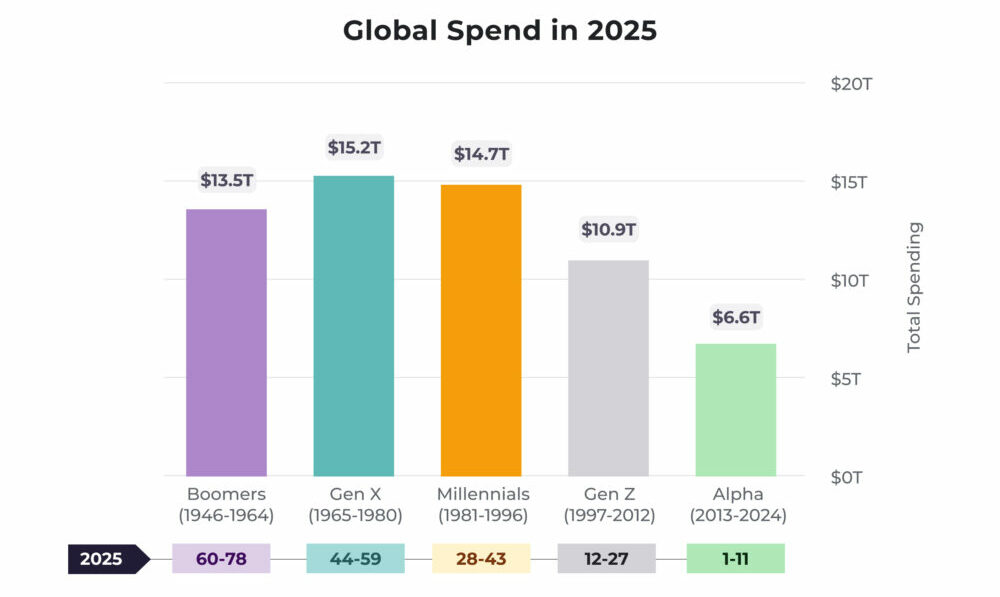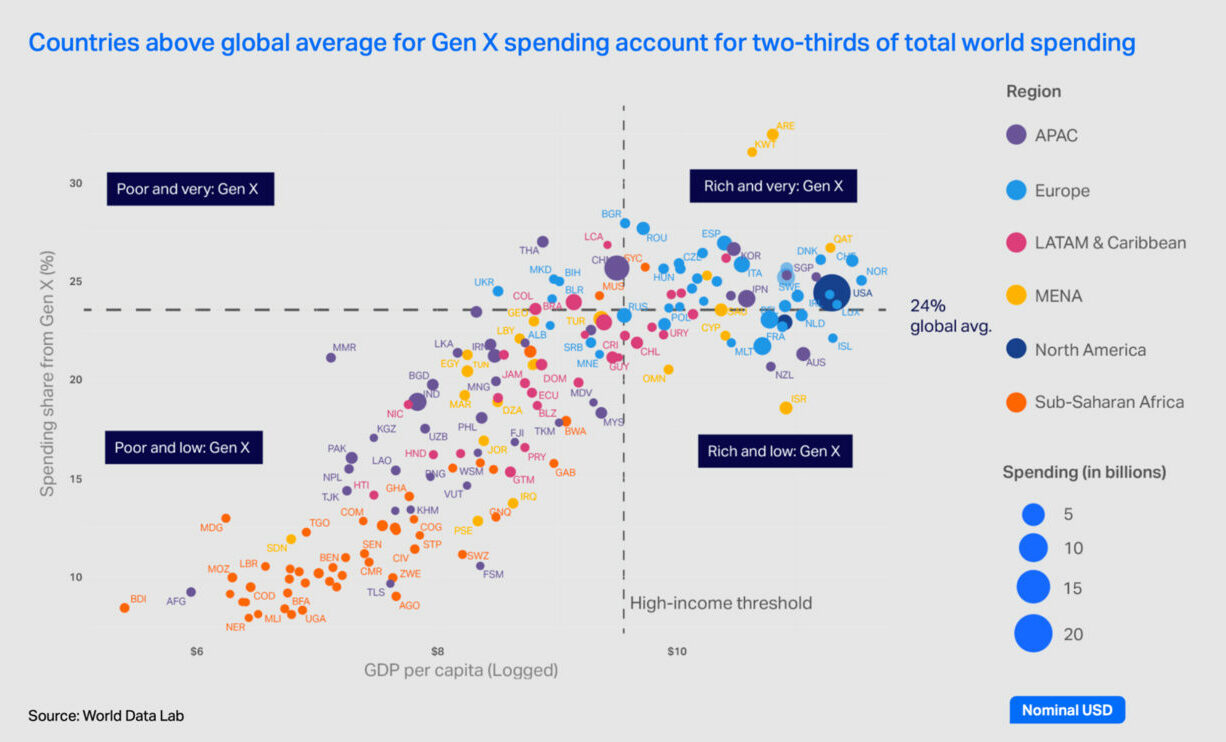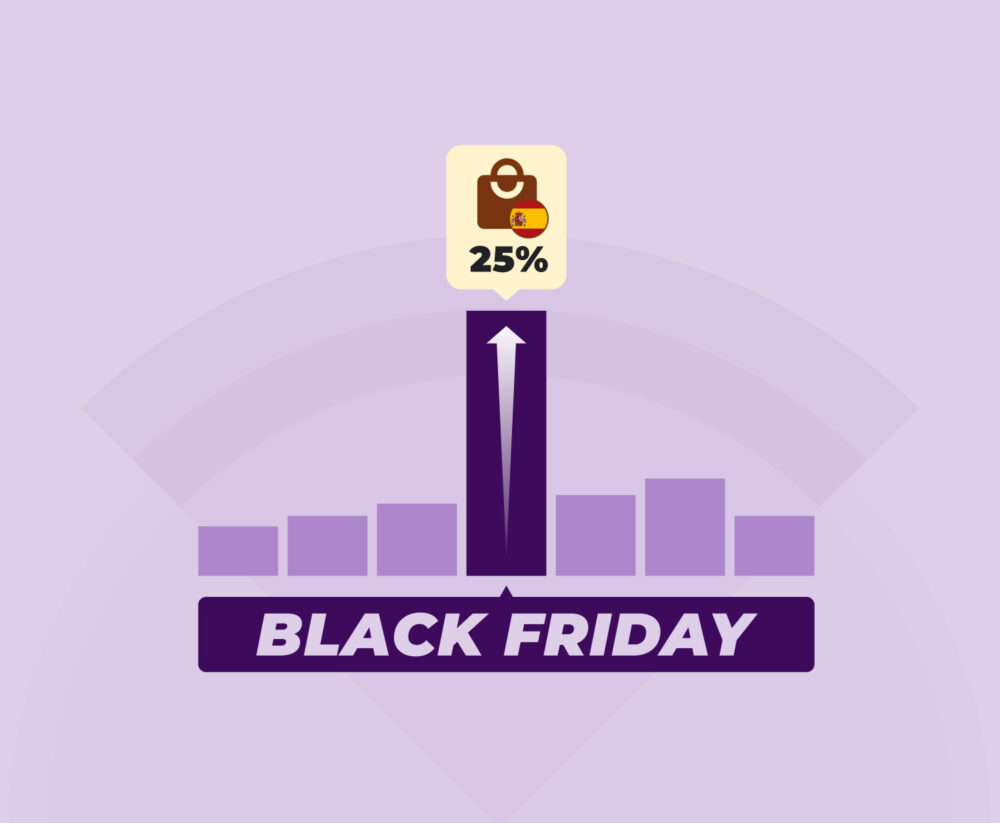Generation X: The group leading consumption in Spain
Generation X will be the undisputed star of consumption in Spain in 2025. Although market trends and major brands tend to focus on Millennials and Generation Z, the data reveals that the generation born between 1965 and 1980—the backbone of national consumption—is leading spending with impressive figures and a decisive profile for the retail sector.
Source: “The X Factor” World Data Lab & Nielsen IQ – July 2025
The hidden engine of Spanish consumption
The report by NielsenIQ and World Data Lab, “The X Factor”, positions Generation X as the most influential and, interestingly, most overlooked consumer segment in most current marketing strategies. Comprising over 12.2 million Spaniards, this group accounts for the country’s largest volume of spending, reaching €236 billion in 2025. Furthermore, this figure is projected to increase by almost 30% before 2030, exceeding €305 billion.
Their average per capita spending is around €18,000, well above other generational segments. They control 50% of global spending and influence between 70% and 80% of family purchasing decisions. This makes Generation X the real decision-makers at home.
A “sandwich” profile and its central role
Known as the “Sandwich Generation”, Generation X is characterised by being between two groups that depend on them. Their parents, whom they care for and support emotionally and financially. And their children, who still need guidance, especially in times of economic uncertainty. This bridging role multiplies their influence, as they lead and manage intergenerational consumption and set trends in the choice of products and services across different age groups.
Luis Simoes, Managing Director of NielsenIQ Iberia, defines it as follows:
“Retailers and manufacturers cannot afford to overlook a group that controls more than €236 billion in annual spending. They are tech-savvy, demanding, and willing to invest in premium products. Whoever wins their loyalty will have an advantage in the next decade”.
Cautious with technology, but always open to trying new things
Although Generation X does not lead in trend adoption—only 12% consider themselves early adopters compared to 21% of Generation Z—they do emerge as a curious group that is receptive to innovation: 36% enjoy trying new products, surpassing Boomers (24%). Additionally, 60% choose premium brands to treat themselves, a figure only exceeded by Millennials (62%).
Their pragmatism is noteworthy: 35% of Generation X members buy based on need rather than brand. Even so, 28% include major well-known brands or own-brand products in their shopping basket, in line with other generations, except for Gen Z, who relegate this preference to 22%.
Contrary to stereotypes, the data confirms that Generation X has integrated technology into their daily lives. They use artificial intelligence to automate and streamline purchasing decisions (31%) and rely on smart devices, such as fridge sensors, to restock products (34%), figures that are close to Millennials and Generation Z (35%). However, they remain notably cautious: 56% avoid sharing personal information online and demand human intervention in customer service.
These habits combine technological efficiency with a strong defence of their privacy, which presents both a challenge and an opportunity for brands.
Global outlook: influence beyond our borders
The influence of Generation X is not limited to Spain. According to forecasts from NielsenIQ and World Data Lab, this group will lead global spending until at least 2033, accounting for the largest volume of spending since 2021 and is expected to reach $23 trillion in 2035. Growth is focused on three main categories: food and non-alcoholic beverages (+$507 billion), beauty (+$80 billion), and alcoholic beverages (+$42 billion).
Source: “The X Factor” World Data Lab & Nielsen IQ – July 2025
A strategic opportunity for brands and retailers
Despite their importance, the market and brands often focus their strategies on younger people, leaving Generation X overlooked. However, as Marta Cyhan-Bowles, Director of Communications at NielsenIQ, points out:
“The influence of Generation X is profound and will continue to shape the future of the economy and consumption in the coming years”
To grow in the next decade, it is key to understand this generation’s habits, address their curiosity, make technology accessible to them, and respect their privacy. Market analysis tools like flipflow can provide precise and actionable insights into the trends and behaviour of Generation X, allowing brands and retailers to design effective strategies that build loyalty and sustainability.






